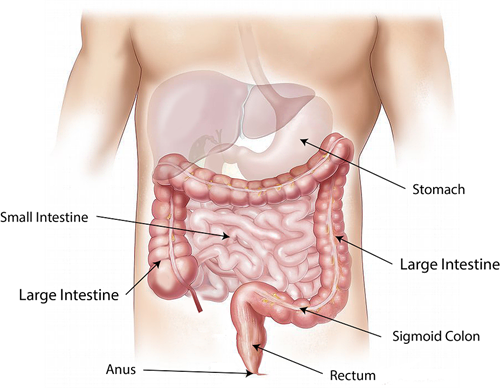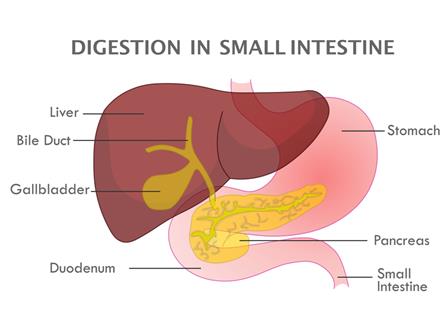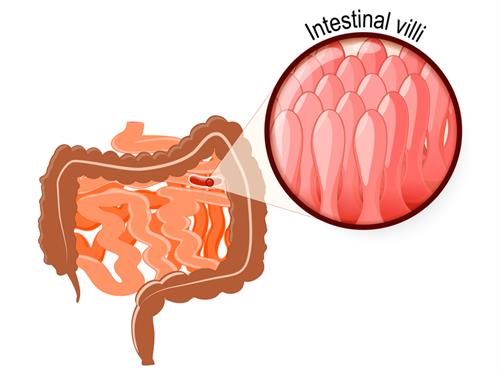PDF chapter test TRY NOW
Small intestine
The small intestine is a long and narrow tube about \(7m\) in length. It is arranged in the form of a highly coiled tube, which is the site of complete digestion of food.
The partially digested food from the stomach comes into the small intestine. The small intestine receives secretions from:
-
Liver
-
Pancreas
-
Its own walls.
In stomach the food is mixed with bile juice, pancreatic juice and intestinal juice. These juices help in the completion of the digestion. During the end of digestion,
-
Carbohydrates are broken down into glucose and fructose
-
Proteins into amino acids
-
Fats into fatty acids and glycerol.

Small intestine, large intestine, rectum and anus
Liver
The liver is a reddish-brown gland situated in the upper part of the abdomen on the right side, and it is the largest gland in the body. The liver secretes a liquid called bile juice that is stored temporarily in a sac called the gall bladder.
Bile plays a vital role in fat digestion. Bile breaks down fats into tiny droplets, making further breakdown easier.

Image displaying liver, gall bladder, and pancreas
Pancreas
The pancreas is a large, cream-coloured gland which is located just below the stomach. The pancreas secretes pancreatic juice. Pancreatic juice completely breaks down the fats into fatty acids and glycerol.
Intestinal glands
The walls of the small intestine secrete intestinal juice. Intestinal juice completely breaks down the starch carbohydrate into the simplest sugar, glucose and proteins into amino acids. Digestion is completed here, and the end products are ready for absorption.
Absorption
The digested food now passes into the blood vessels in the wall of the intestine. This process is called absorption.
Thousands of thin, finger-like outgrowths called villi line the inner walls of the small intestine. The villi increase the surface area of the intestine for rapidabsorption of the digested food.

Intestinal villi
Assimilation
The absorbed nutrients are transported through the blood to the various parts or organs of the body.
The incorporation of absorbed nutrients into the cell components is called assimilation.
In the cells, food is used for energy, growth as well as in repair. In the cells that require energy, glucose breaks down with the help of oxygen to form carbon dioxide, water and releases energy.
The absorbed nutrients are also used to build complex substances such as proteins for the body. The food which remains undigested and unabsorbed enters the large intestine.
Reference:
https://pixabay.com/illustrations/abdomen-intestine-large-small-1698565/
